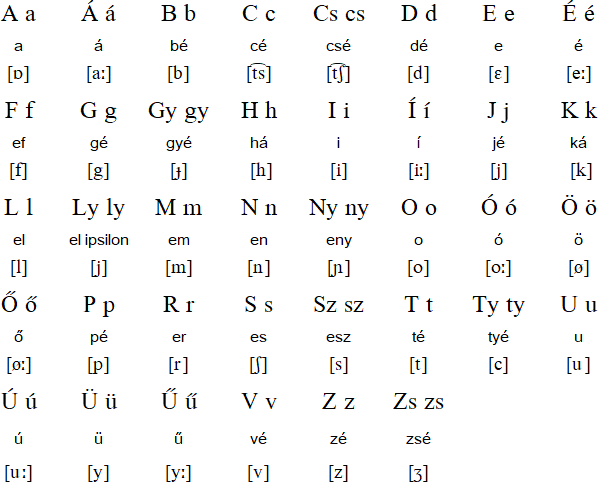Dictionaries
Sztaki Szotar is is an Online Hungarian - English /English - Hungarian dictionary, which supports short and long vowel insert feature and includes additional language options: German - Hungarian; French - Hungarian; Italian - Hungarian; Dutch - Hungarian; Polish - Hungarian. Each language selection is interchangeable.
Google Books: Hungarian Grammar
Simplified grammar of the Hungarian language was published in 1892. Ignaez Singer's guide to Hungarian grammar can be very helpful for students. An open source version of the text is available here.
Hungarian Language
Origin
Hungarian is an Ugric language with about 13 million speakers (in 2012) in Hungary, Romania, Serbia, Ukraine and Slovakia. There are also many people of Hungarian origin in the UK and other European countries, the USA, Canada and Australia.
Hungarian is a highly inflected language in which nouns can have up to 238 possible forms. It is related to Mansi, an Ob-Ugric language with about 4,000 speakers who live in the eastern Urals, and Khanty or Ostyak, the other Ob-Ugric language which is spoken by about 15,000 people in the Ob valley of western Siberia.
The earliest written text in Hungarian was a funeral oration (halotti beszéd) written in 1196, and the first complete book to be printed in Hungarian, Az zenth Paal leueley magyar nyeluen(The letters of Saint Paul in the Hungarian language) by Benedek Komjáti, was published in 1533 in Kraków in Poland. Hungarian literature flourished during the 18th and 19th centuries.
Hungarian at a Glance
- Native name: magyar, [ˈmɒɟɒr] magyar nyelv [ˈmɒɟɒr ˈɲɛlv]
- Linguistic affliation: Uralic, Finno-Ugric
- Number of speakers: c. 13 million
- Spoken in: Hungary, Austria, Croatia, Poland, Romania, Serbia, Slovakia, Slovenia, Ukraine
- First written: 1196
- Writing system: Latin script
- Status: Official language in Hungary and the European Union. Recognised minority language in Romania, Croatia, Slovakia, and in parts of Slovenia, Austria and Ukraine

Magyaróra
The Magyaróra website does provide "new paths to the Hungarian language." The organizers have gone to great lengths to be helpful. For example, they have organized the materials by levels of language comprehension. Students and teachers alike will appreciate the worksheets, short exercises, literary texts and articles, cultural facts, etc. A great supplement to classroom instruction.